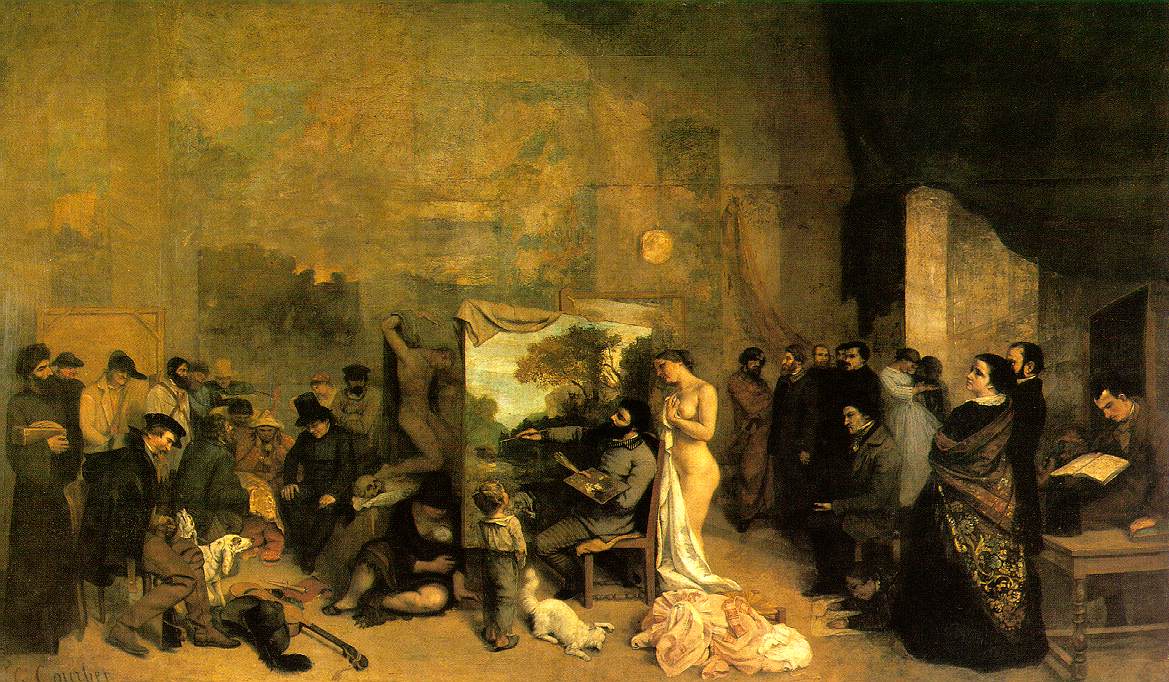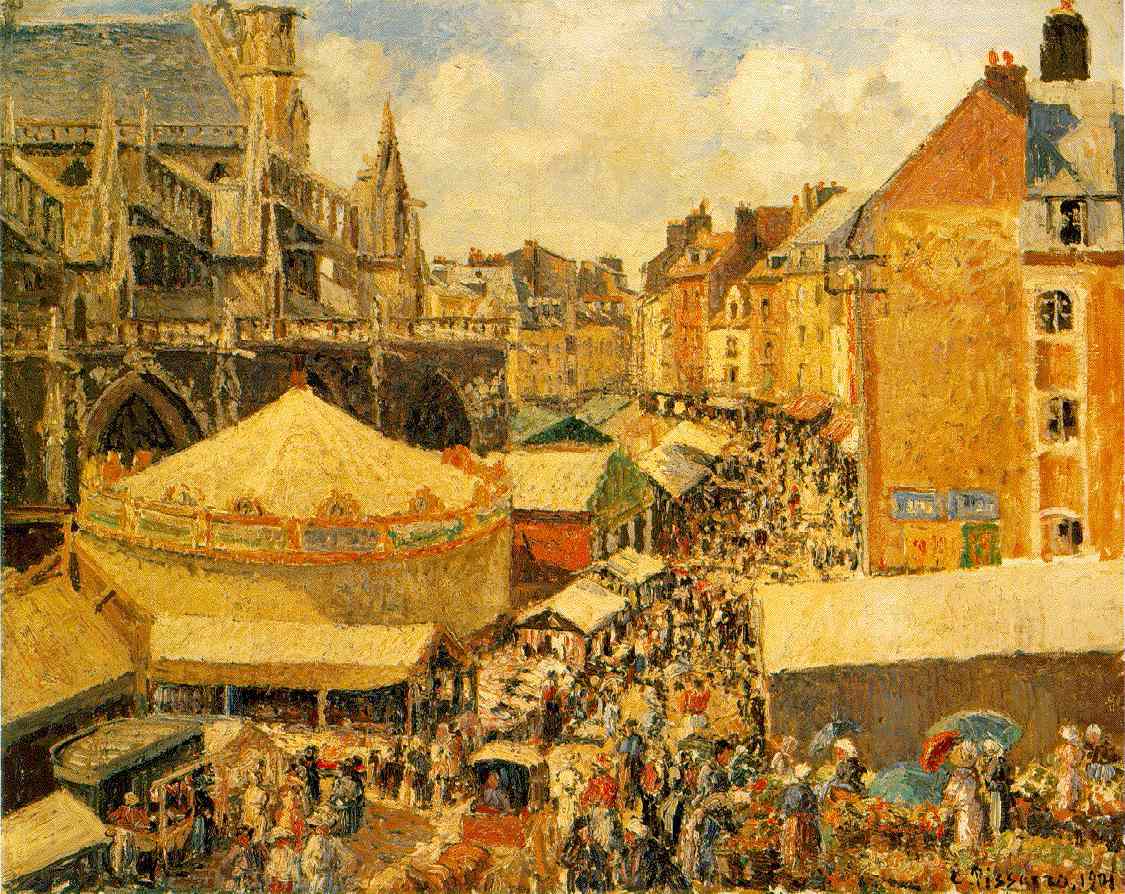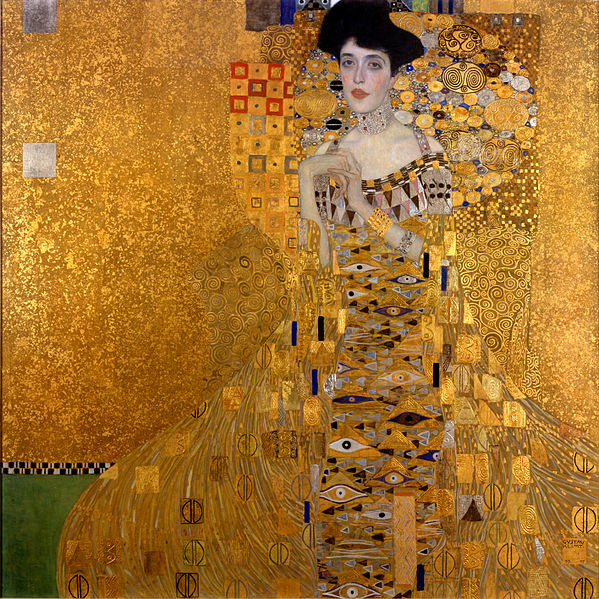Realism
Realism is a style of representation of a painting. In this
style the artist show exactly the way things are. Therefore no idealism is
involved in the composition. One of the artists who expressed himself in this
style is Jean-Dẻsirẻ- Gustave Courbet.
Courbet, The Stormy Sea
In this painting, oil on canvas, Courbet portrays a scene of
the sea. One can sense movement , this is due to:
Colour: The different shades of green show different levels
created by waves in the sea itself. The darker the green the heavier the wave
is, while the light green represent the water rush.
Lines: At the foreground the different levels of the sea are
easily noticed, which clearly show the direction the wave is heading for. Although
the horizon always creates a sense of calmness and tranquility and therefore
stillness, the gap between the horizon and the clouds creates a rough texture
which also shows movement. It is as if
one is seeing the clouds moving due to the wind.
Brushstrokes: The rougher the brushstrokes are the more
texture it creates therefore giving more of a dynamic feel to the painting.
Courbet, The Painter’s studio, A real Allegory
This painting which is also oil on canvas portrays a scene
in a painter’s studio as the title implies. Although no drastic movement is happening,
and a balance of stillness and movement are present it gives the ambiance of a
working place. The nude woman is posing, which shows stillness yet the folds of
the fabric shows movement. The artist is
seated yet he is holding his hands in such a way that one could actually see
him move his hand to paint. The pets
are next to their owners yet still one could notice the tail of the curious cat
moving and the love of the owner while patting his dog.
Reference:
Artlex,1996-2010. Realism. Available at: http://www.artlex.com/ArtLex/r/realism.html
(27/10/2013)
Impressionism
This art movement began in France 1860. The artworks of this
time were paintings of everyday life, situated outdoors at different times of
day, resulting into paintings with different shades and highlights. The brushstrokes
used were medium sized, placed next to each other creating a square next to
each other.
Camille Pissarro, Place du Theatre Francias: Rain Effect
This oil on canvas painting is an example of Impressionism; it
portrays an everyday scenario of a street in Paris on a rainy day. One can
notice the commotion created by the rain, people walking with their umbrellas
and crossing the street, the horses picking a direction to move to, one of the carriages
in fact made a sudden turn. The repetition of carriages one after the other gives
a sense of movement due to perspective. The eye would be directed from the background
building in a blur due to the rain and follow the line seeing the carriages getting
bigger and more detailed, seeming as if they are moving.
Camille Pissarro , The Fair in Dieppe, Sunny Morning.
Also oil on canvas this painting is brighter due to the
different condition of the weather which is an element of Impressionism. Unlike
the other painting which the movement is more at a fast pace in this painting
the movement is slower and more tranquil. It allows the one observing the
painting to walk along with the characters depicted and admire the different
buildings and fair stalls in front of them.
Artlex, 1996-2010. Impressions. Available at: http://www.artlex.com/ArtLex/ij/impressionism.html
(28/10/2013)
Patterns in Art
Movement in
art could be created in various ways, one of which is through repetition of a
pattern. Looking back at various cultures and various stages in history one can
notice patterns as a means of decoration to a subject matter or of self
expression towards a subject.
Gustav Klimt is one of the artists who used
patterns in his artworks, to a point where the characters in a portrait almost
become abstract (Bell. C). In the painting of Adele Block-Bauer, ( oil and gold
on canvas) although said that Klimt was
a womanizer, Block-Bauer is not quite the focal point of the painting, due to
the pattern which is more eye catching.
Klimt also used patterns in landscapes, resulting in scenes which are
unrealistic. (Lee. P) Not only because the patterns used where not actually seen
but also because there is a lack of interest in the light and atmosphere
depicted.
Gustav Klimt, Adele Block- Bauer (1907)
Gustave
Klimt, Garden Path with Chicken, (1916)
Aboriginal
Art is one of the old arts in history, which have been discovered in the
twentieth century. In most of their art works patterns are used to decorate the
subject matter. On the islands of Bathurst and Melville, Tiwi people had been
using patterns as a means of art on Bark sheets as a canvas and frayed bark or
feathers as brushes, although nowadays some European brushes are being
used. Nellie Wanterapila used natural
pigments on eucalyptus bark, to represent corals. Women in this group of people
collect the food (Caruana W), shellfish; this may have been a representation of
what Nellie saw during the times she was on shore collecting food.
Nellie
Wanterapila, Coral (1974)
Recently an
artist; Brice Marden represented a vine is minimalist form, resulting in the pattern
as a representation of the subject matter. The oil on linen painting is not easily recognized;
actually it is not recognizable at all, as long as one does not read the title
of the work.
Brice Marden
– Vine (1992/1993)
The use of pattern can be used in different ways as
mentioned above, the examples I choose give an illusion of movement, although
not all patterns are as strong. In my visual product a combination of the
artworks patterns studied here is going to be present.
Sources:
Bell.
C,2003. Modern Art A Crash Course. Leicester. Bookmart Ltd.
Lee.P,N/A.Gustave
Klimt: Master Of Pattern and Colour. [online] Available at: http://quintessentialruminations.wordpress.com/2011/11/18/gustav-klimt-master-of-pattern-and-colour/ [15/12/2013]
Caruana.
W,2003. Aboriginal Art New Edition. Singapore. Thames & Hudson INC.








No comments:
Post a Comment